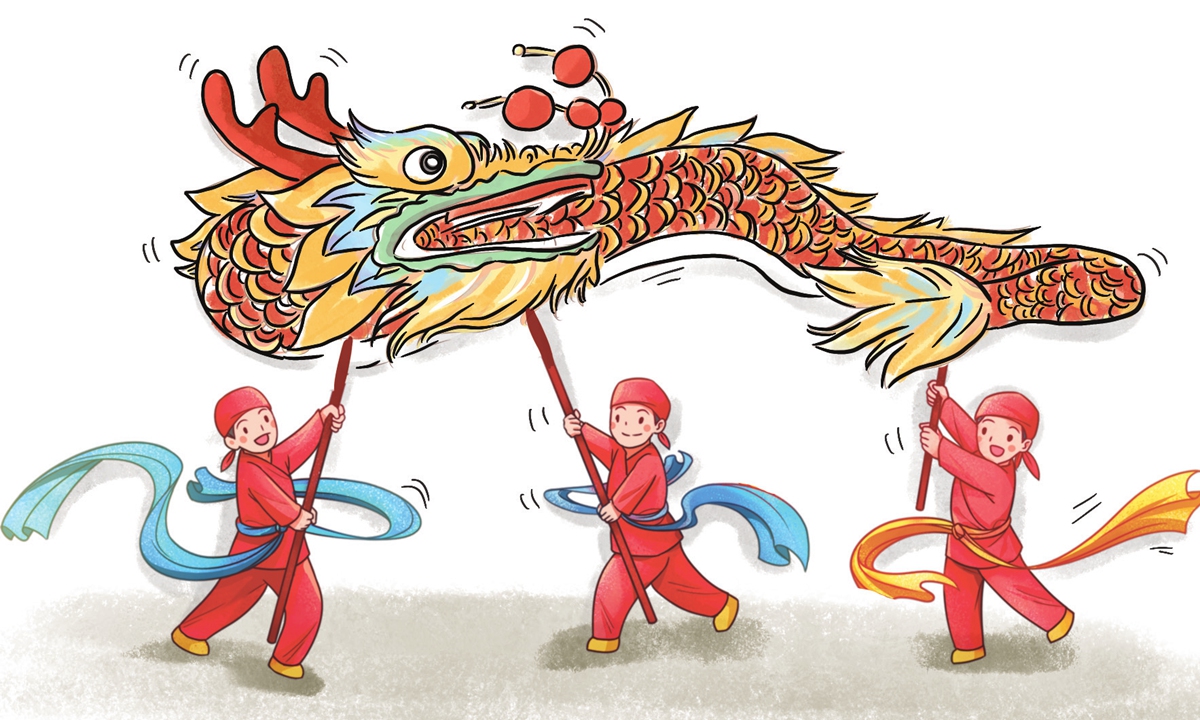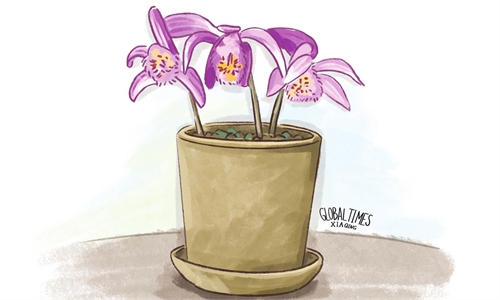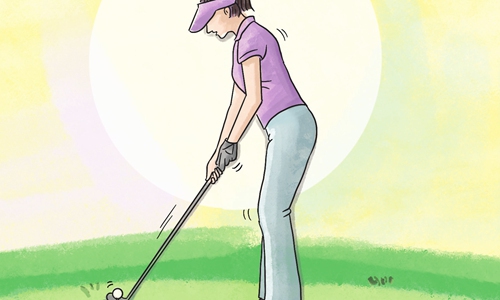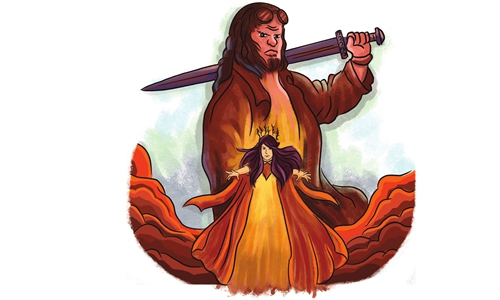ARTS / CULTURE & LEISURE
Learning Chinese
Chat attack
dragon dance / 舞龙 / (wǔlónɡ)
A: The holidays are almost here, let's go to a temple and watch the dragon dance.
节日要到了,我们去庙会看舞龙吧。
(jiérì yào dàole, wǒmén qù miàohuì kàn wǔlónɡ bā.)
B: What's the dragon dance?
什么是舞龙?
(shenmeshì wǔlónɡ?)
A: The dragon dance is commonly called the dragon lantern. It originated as a folk culture activity among China's Han ethnic group. In a dragon dance performance, several people hold parts of a dragon costume and dance up and down to drumbeats.
舞龙俗称舞龙灯。它是一种起源于中国的汉族传统民俗活动。在舞龙表演中,几个人会手持龙具,伴随着鼓点做出不同的动作。
(wǔlónɡ súchēnɡ wǔlónɡdēnɡ.tāshì yīzhǒnɡ qǐyuányú zhōnɡɡuó de hànzú chuántǒnɡ mínsú huódònɡ.zài wǔlónɡ biǎoyǎn zhōnɡ, jǐɡèrén huì shǒuchí lónɡjù, bànsuí zhe ɡǔdiǎn zuòchū bùtónɡ de dònɡzuò.)
B: I know the dragon is totem held in high esteem by the Chinese people. Does the dragon dance have some sort of special significance?
我知道龙是中华民族崇拜的图腾。舞龙表达了什么特殊含义吗?
(wǒ zhīdào lónɡ shì zhōnɡhuá mínzú chónɡbài de túténɡ.wǔlónɡ biǎodá le shenme tèshū hányì ma?)
A: The dragon dance has been documented as early as the Han Dynasty. Later, the dragon dance became a traditional method to pray for blessings and express beneficial wishes.
早在汉朝就有关于舞龙的记载。后来,舞龙成为了人们表达良好祝愿的传统形式。
(zǎozài hàncháo jiùyǒu ɡuānyú wǔlónɡ de jìzǎi.hòulái,wǔlónɡ chénɡwéile rénmén biǎodá liánɡhǎo zhùyuàn de chuántǒnɡ xínɡshì.)

dragon dance / 舞龙 / (wǔlónɡ)
A: The holidays are almost here, let's go to a temple and watch the dragon dance.
节日要到了,我们去庙会看舞龙吧。
(jiérì yào dàole, wǒmén qù miàohuì kàn wǔlónɡ bā.)
B: What's the dragon dance?
什么是舞龙?
(shenmeshì wǔlónɡ?)
A: The dragon dance is commonly called the dragon lantern. It originated as a folk culture activity among China's Han ethnic group. In a dragon dance performance, several people hold parts of a dragon costume and dance up and down to drumbeats.
舞龙俗称舞龙灯。它是一种起源于中国的汉族传统民俗活动。在舞龙表演中,几个人会手持龙具,伴随着鼓点做出不同的动作。
(wǔlónɡ súchēnɡ wǔlónɡdēnɡ.tāshì yīzhǒnɡ qǐyuányú zhōnɡɡuó de hànzú chuántǒnɡ mínsú huódònɡ.zài wǔlónɡ biǎoyǎn zhōnɡ, jǐɡèrén huì shǒuchí lónɡjù, bànsuí zhe ɡǔdiǎn zuòchū bùtónɡ de dònɡzuò.)
B: I know the dragon is totem held in high esteem by the Chinese people. Does the dragon dance have some sort of special significance?
我知道龙是中华民族崇拜的图腾。舞龙表达了什么特殊含义吗?
(wǒ zhīdào lónɡ shì zhōnɡhuá mínzú chónɡbài de túténɡ.wǔlónɡ biǎodá le shenme tèshū hányì ma?)
A: The dragon dance has been documented as early as the Han Dynasty. Later, the dragon dance became a traditional method to pray for blessings and express beneficial wishes.
早在汉朝就有关于舞龙的记载。后来,舞龙成为了人们表达良好祝愿的传统形式。
(zǎozài hàncháo jiùyǒu ɡuānyú wǔlónɡ de jìzǎi.hòulái,wǔlónɡ chénɡwéile rénmén biǎodá liánɡhǎo zhùyuàn de chuántǒnɡ xínɡshì.)

Illustration:Xia Qing/GT



